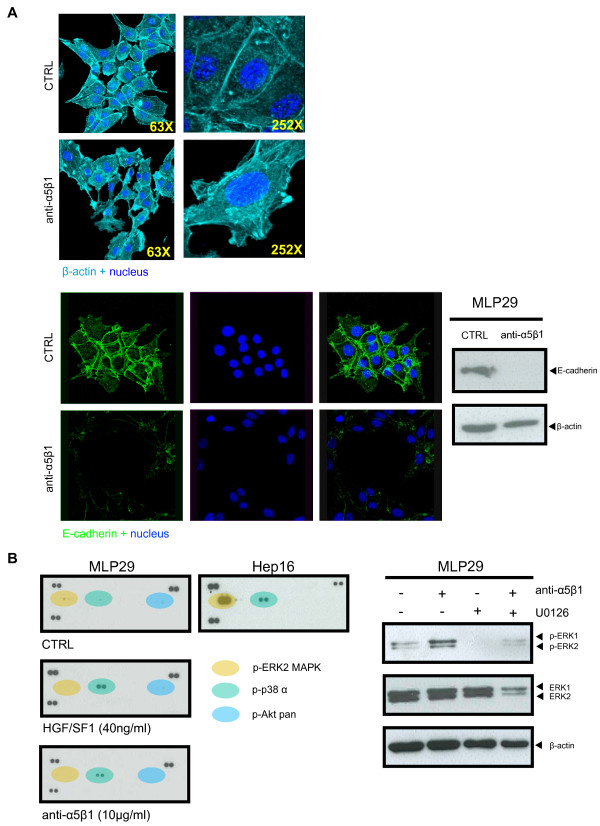Figure 2.
α5β1 integrin functional block induced spreading and scattering of MLP29 hepatic progenitor cells. (A) Immunofluorescent detection of F-actin in MLP29 cells showed that the cells grow in packed islands, while after the treatment with a specific α5β1-functional blocking antibody the cells undergo spreading and scattering. Higher magnification (252×) of untreated and treated MLP29 cells shows the characteristic actin microfilaments reorientation associated with cytoskeleton re-organization. Immunofluorescent and immunoblot detection of E-cadherin in MLP29 cells following α5β1 functional blockade showed that the expression levels of E-cadherin decreased at the cell-cell junctions in cells treated with the specific functional blocking antibody against α5β1, which was corroborated by immunoblot analysis. (B) Representative images of the phospho-MAPKs arrays. Activation of the different members of the MAPKs family was identified by means of a key provided with the kit. MLP29 cells were treated with the α5β1 functional blocking antibody or HGF/SF1, in the presence or absence of the specific MEK inhibitor U0126. Cells were lysed and total protein (20 μg) was resolved by SDS-PAGE and analyzed by immunoblot for ERK1/ERK2 MAPK and phospho-ERK1/ERK2 MAPKs. Blots were then reprobed with an antibody for β-actin as a control for protein loading. Results are representative of at least three independent experiments.

